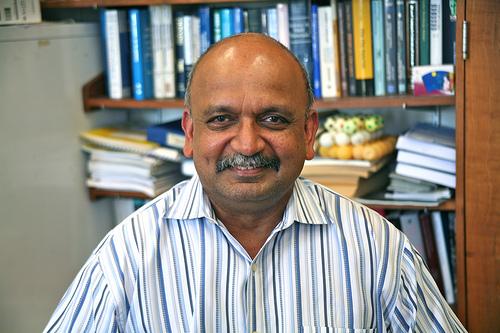
Among the most cited papers in bulk nanostructured materials (BNM) in the field of materials science is a paper by Brown University Professor Sharvan Kumar. His paper, "Mechanical behavior of nanocrystalline metals and alloys," written with H. Van Swygenhoven, and S. Suresh was first published in 2003. Of the more than 8,300 papers that have been published in Acta Materialia, a premier journal in the field, Kumar's paper ranks fourth all-time in number of citations. At present, it has been cited more than 1,000 times.
In a recent paper on the current status of bulk nanostructured materials by Terence G. Langdon of the University of Southampton (U.K.) and the University of Southern California, he argues that although the science of BNM has a relatively short history, these materials are becoming increasingly important in materials science. After analyzing data from four major scientific journals, it is shown that papers on BNM and associated topics represent almost 50% of the all-time top ten most cited publications.
For a link to Professor Kumar's paper, please go to: http://topaz.ethz.ch/function/web-hard/PDFs/Kumar2003.pdf
Paper Abstract:
Nanocrystalline metals and alloys, with average and range of grain sizes typically smaller than 100 nm, have been the subject of considerable research in recent years. Such interest has been spurred by progress in the processing of materials and by advances in computational materials science. It has also been kindled by the recognition that these materials possess some appealing mechanical properties, such as high strength, increased resistance to tribological and environmentally-assisted damage, increasing strength and/or ductility with increasing strain rate, and potential for enhanced superplastic deformation at lower temperatures and faster strain rates. From a scientific standpoint, advances in nanomechanical probes capable of measuring forces and displacements at resolutions of fractions of a picoNewton and nanometer, respectively, and developments in structural characterization have provided unprecedented opportunities to probe the mechanisms underlying mechanical response. In this paper, we present an overview of the mechanical properties of nanocrystalline metals and alloys with the objective of assessing recent advances in the experimental and computational studies of deformation, damage evolution, fracture and fatigue, and highlighting opportunities for further research.